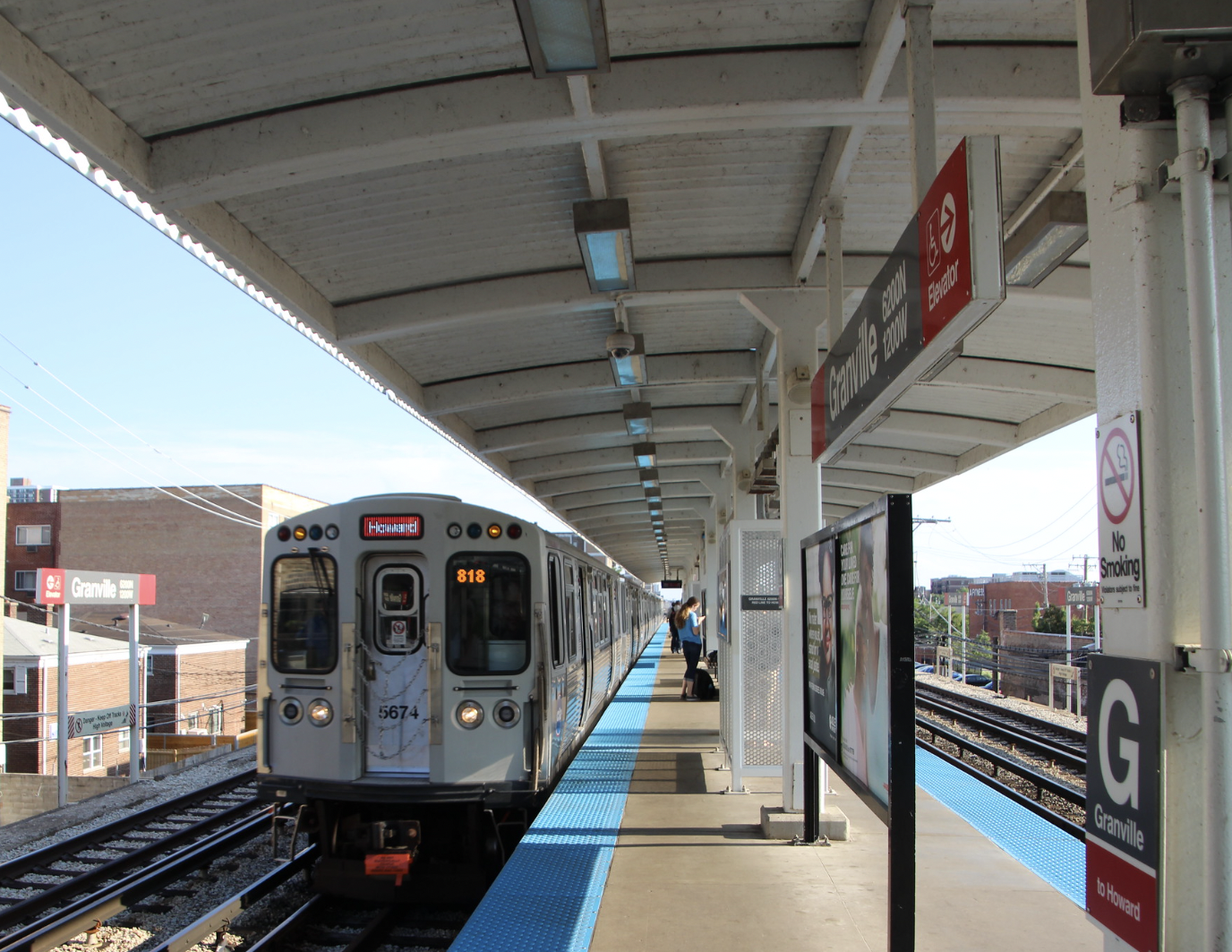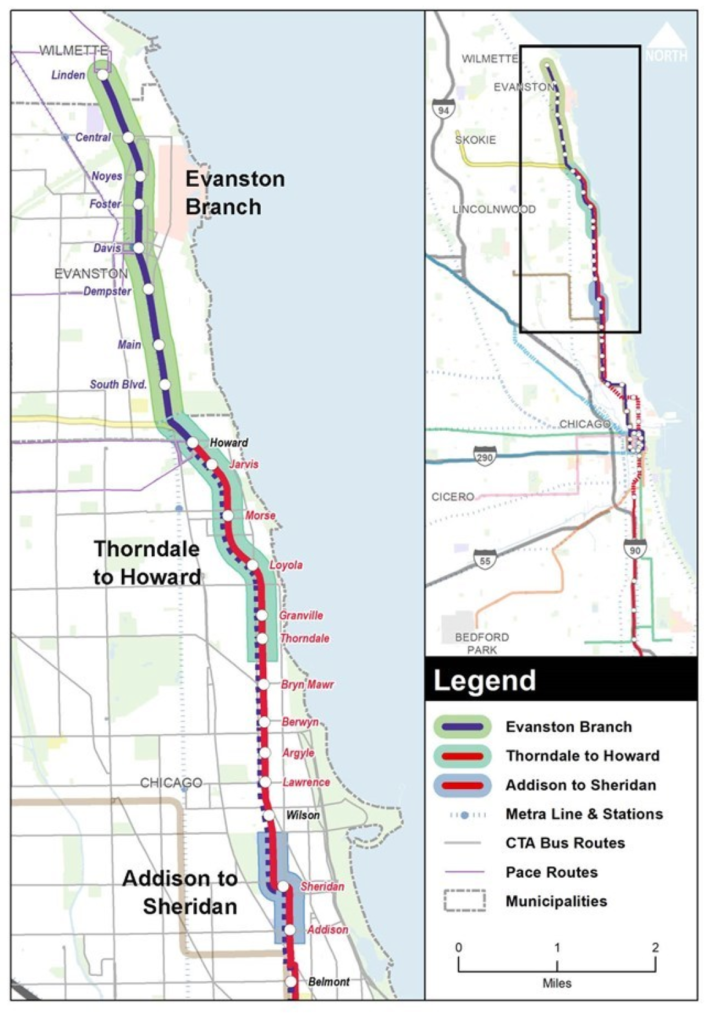As CTA continues with the $2.1 billion Phase I of the Red and Purple Modernization program, including the reconstruction of the Lawrence, Argyle, Berwyn, and Bryn Mawr stations, the transit agency is gearing up for the next phases of RPM.
The future phases will include the Red and Purple lines between the Sheridan (3900 N.) and Addison (3600 N.) stations; the stretch between the Thorndale (5930 N.) and Howard stops (7600 N.); and all of the 3.3-mile section of the Purple Line north of Howard in Evanston and Wilmette (the non-express portion.) As with the current project, the purpose of the next phases will be to replace the century-old viaducts and elevated track structures, and rebuild the stations to make them wheelchair accessible.
Earlier this month the CTA announced a pair of virtual public meetings on the RPM Next Phases Planning Study, which will lay the groundwork for the new projects. Streetsblog attended the hearing last Tuesday focused on the work in Chicago, while a meeting on Thursday concentrated on the suburban portion.
At this point, CTA is still early in the planning process for the next phases of RPM, so many details are still up in the air. But agency staff and consultants laid out the general vision for the project. Notably, they discussed the possibility of redoing the track layout for Sheridan station, where northbound trains have to make a sharp westbound left turn toward the platform, and then make another sharp northbound right turn to continue past along Graceland Cemetery. It's an awkward bit of trackage to navigate, especially as trains get longer.
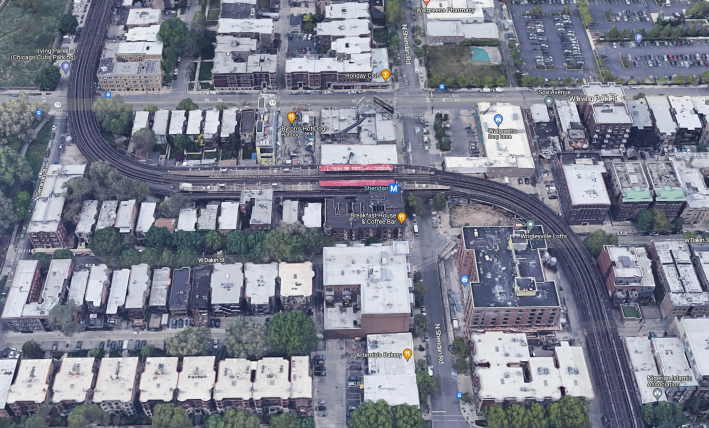
The officials acknowledged that reconfiguring the curve was easier said than done given the surrounding buildings, and floated the possibility of moving the station. They added that the Granville and Loyola stations, which are already wheelchair-friendly, might be redone, and even the Howard stop, which underwent a major renovation in the 2000s, might see some updates. Overall, the goal is to make all the Red Line platforms long enough to berth ten-car trains, and all the Purple Line-only stops able to accommodate eight-car trains.
The one major “if” hanging over the project is funding. CTA is applying for a federal Core Capacity grant, but even if that comes through, the officials don’t expect it to cover more than 60 percent of the cost. CTA would need to come up with a local funding match. The agency's senior manager of strategic planning Sonali Tandon said one funding mechanism could be the existing RPM transit tax-increment financing district, although that only includes the project area as far north as Devon Avenue. State funding would also likely be a piece of the puzzle. The final timeline will depend on how much money CTA will be able to secure and when it will get the cash.
What CTA is working with
The Red Line stations that would be overhauled as part of the next phases have the same issues as the Wilson-to-Thorndale stops did. They have no elevators, and the platforms aren’t wide enough to comfortably accommodate wheelchairs and other mobility devices.
Sheridan was originally built as an express station, so it has two island platforms, allowing the Purple Line to stop there (although CTA hasn’t taken advantage of that ability in recent decades, aside from some Cubs games.) With buildings surrounding the tracks at all sides, there’s no way to reduce the sharp angles without major demolition work. Granted, that wasn't a dealbreaker for the construction of the Belmont Flyover bypass as part of Phase I, which involved knocking down about 16 buildings.
Granville was renovated in the late 1970s, getting an elevator and an escalator in the process, but the platform wasn't widened. As someone who lived near the station for almost a decade, I’ve seen people trying to use walkers and wheelchairs there, and it always looked precarious.
Loyola is unique among the ‘L’ stations because it has a long, narrow island platform that is divided into two sections, one inbound and one outbound. The stairs, escalators and an elevator are located between the two stretches, making it impossible to move between the inbound and the outbound platforms without first going downstairs.
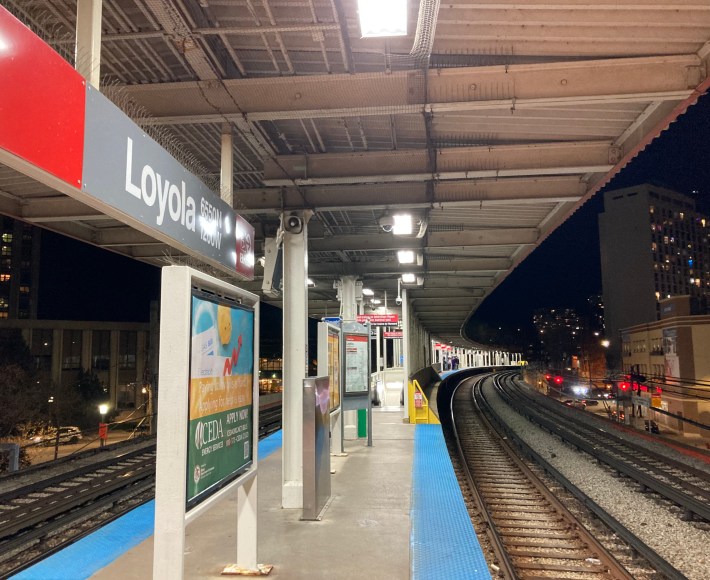
The design came about as part of 1970s renovations. At the time CTA couldn’t alter the station's basic footprint but it still wanted to make more room for passengers at one of the line’s busier stations. Because the platform wasn't widened, riders with mobility issues run into the same problem as at Granville. These days, CTA has a bit more room to expand the station's footprint, at least west of Sheridan.
What may lie ahead
During Tuesday's meeting, CTA project manager Christina Bader laid out broad concepts for what the new stations would look like. They are broadly similar to what the transit agency is doing with the Wilson-to-Thorndale segment. Along with building wider platforms, elevators, and other features to improve accessibility, the reconstructions will include moving the support beams and columns out of the middle of the station viaducts, installing canopies that cover the entire platform, and replacing the track switches and signals. Bader mentioned that the Purple Line signals date back to the 1970s, making them "[some] of the oldest signals in the system."
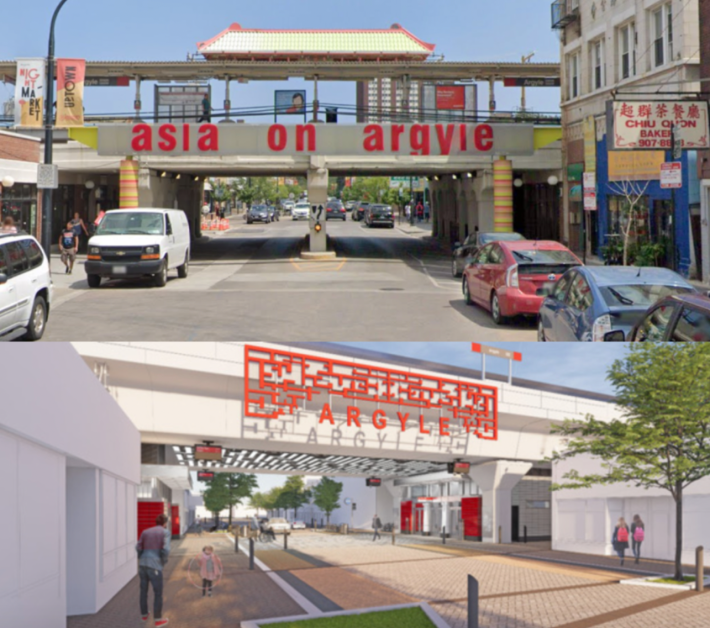
While Bader noted that the pandemic caused CTA use to plummet, and ridership is still far below 2019 levels, she said the agency believes investing in accessibility and capacity is important in the long run. “A lot has changed since the pandemic, but we know ridership is recovering, and the Red and Purple lines will continue to be critical infrastructure for Chicago and the northern suburbs."
Bader also acknowledged the footprint challenges, especially when it comes to Sheridan. “CTA only owns the land where the station and the tracks currently sit. There's both old and new development that makes straightening the curve challenging.”
Marissa Strassel, senior associate at MUSE Community + Design, CTA’s community outreach consultant for the project, said that they expect to do in-person and virtual meetings sometime this fall. They also plan to use online surveys (click here to respond to the current one through March 27) and provide updates the project page on the CTA website. “So the goals of our engagement are kind of two-fold. We want to create opportunities for general feedback, and we want to get feedback on station elements.”
Attendees also had a chance to submit questions during the March 14 meeting. Asked whether CTA would consider creating a Red/Purple transfer at either Granville or Loyola, the agency's director of strategic planning and policy Leah Dawson Mooney said they could look at transfer opportunities, but didn’t explicitly commit to it.
Dawson Mooney did say CTA may look into changing Howard’s configuration, noting that right now there are only four tracks and two platforms that Red, Purple, and Yellow lines must share. “It's kind of challenging to have a single terminal [serving] all three." She added that site constraints, as well as the fact Howard is too important a station to ever be taken out of service entirely, would make any major changes difficult.
Asked whether CTA would consider accessibility improvements, such as widening platforms, at Loyola or Granville, Tandon said, “We will be looking at all stations, even if they're currently accessible.”
When asked whether the new stations will include bike and scooter parking, as well as better connections to buses, Dawson Mooney said CTA will assess the current bike parking situation and proximity of Divvy bike-share stations.
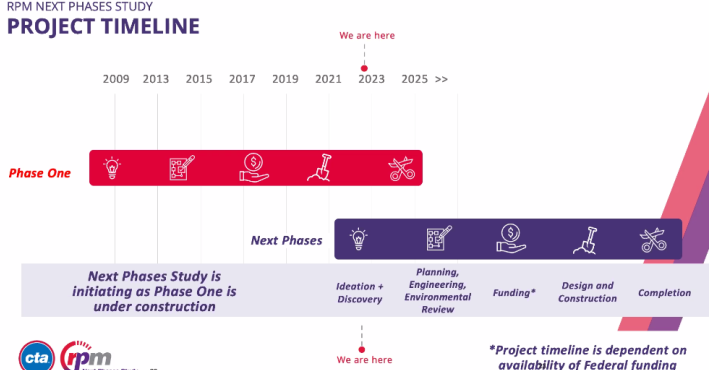
During the meeting, CTA staffers shared a tentative timeline that suggests the project could take around 12 years, with engineering of the next phase starting as Phase I construction wraps up. But they emphasized that funding availability will ultimately dictate the timeline. “2025 is when Phase I will be completed,” Bader said. “It's not when Sheridan will be under construction."
